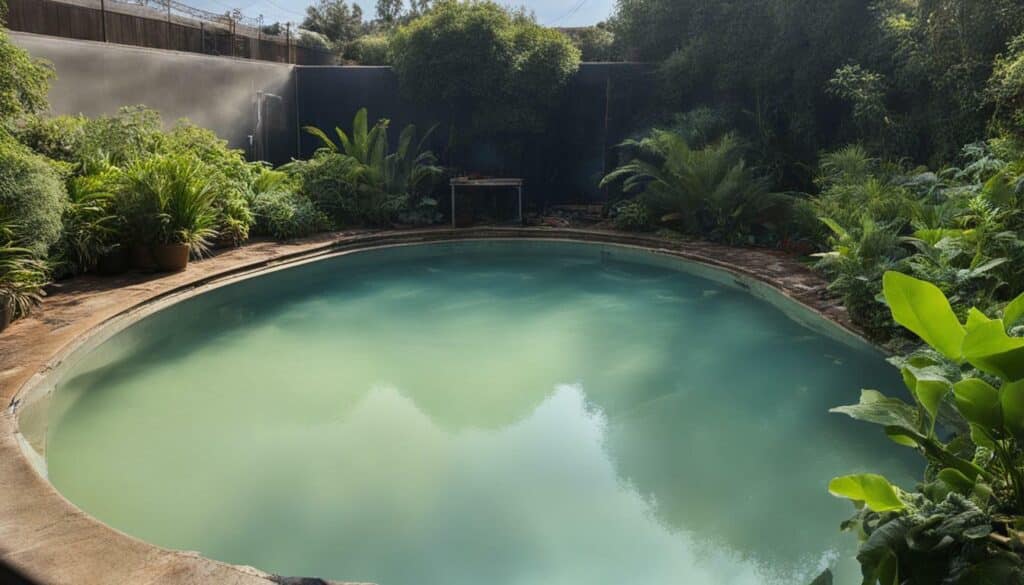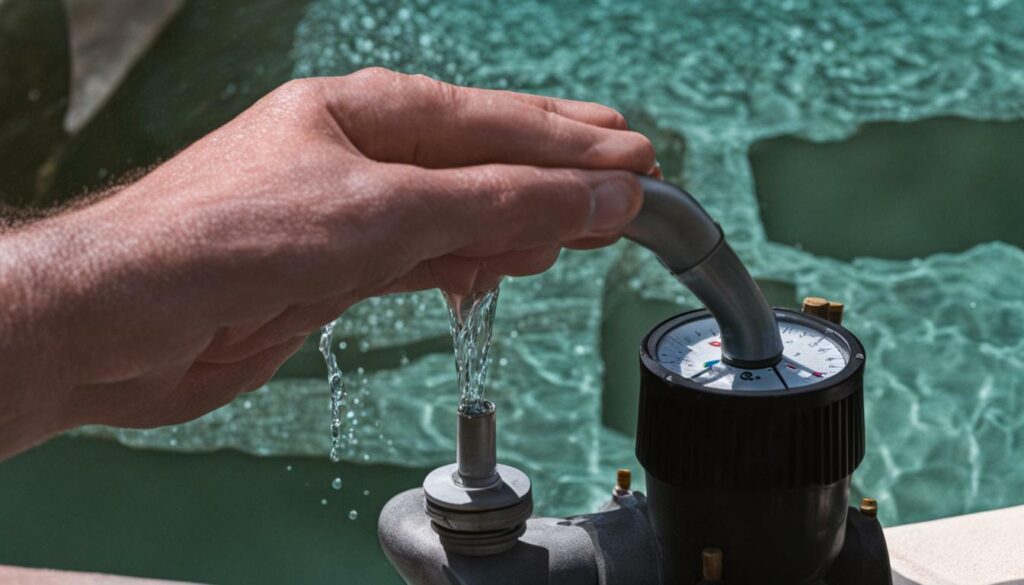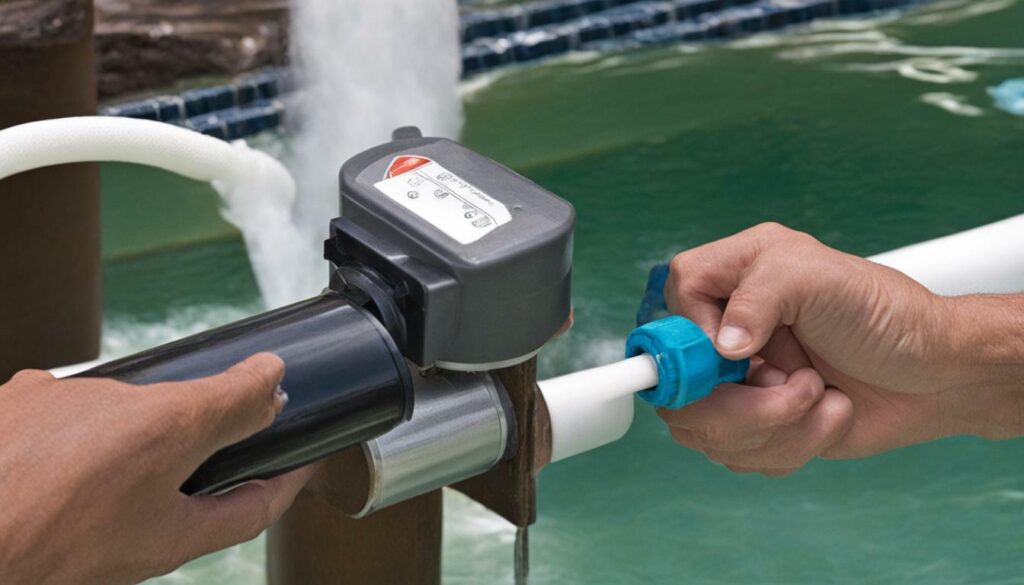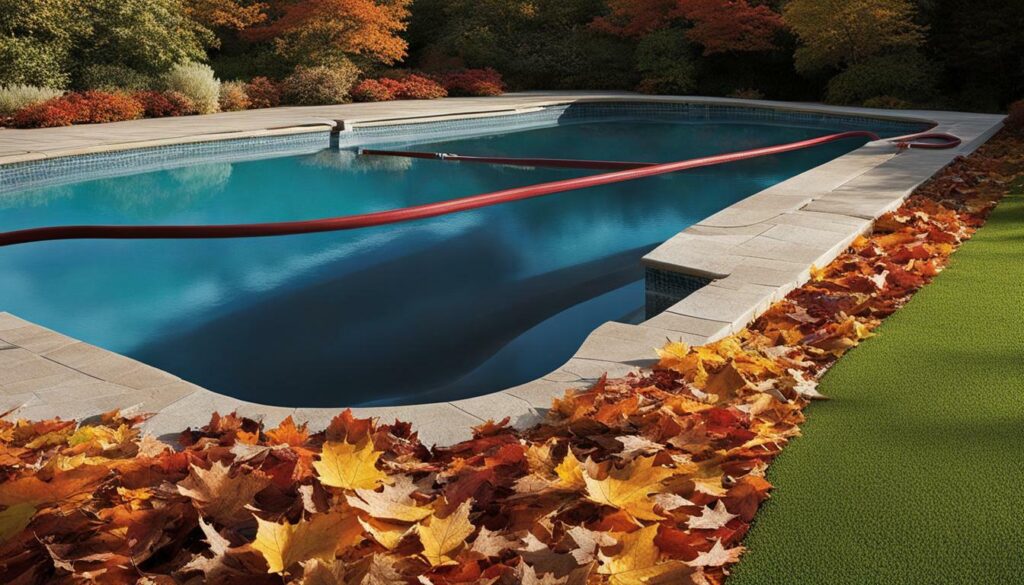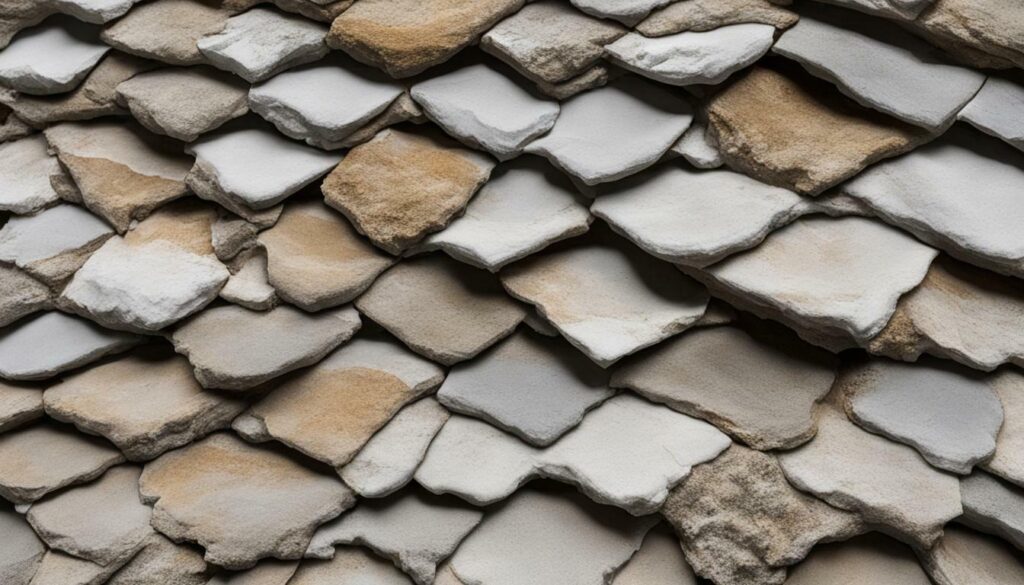
Do you notice unsightly white spots on your pool tile? That’s likely calcium buildup, and it can be a headache to deal with. Fortunately, we’ve got you covered with a step-by-step guide on how to remove calcium from your pool tile. Not only will this restore the appearance of your pool, but it will also prevent any further buildup that could damage the tile or pool equipment.
- To remove calcium from pool tile, gather necessary supplies and prepare the pool area before starting the cleaning process.
- Vinegar is a safe and effective natural cleaning agent for removing calcium deposits from pool tile.
- Commercial tile cleaners can also be used, but be sure to follow instructions carefully.
- Scrubbing and brushing techniques are essential for effectively removing calcium deposits from pool tile.
- Prevent future calcium buildup by regularly maintaining your pool tile.
Understanding Calcium Buildup on Pool Tile
Calcium buildup on pool tile is a common occurrence that can negatively impact the appearance and functioning of your pool. The white, crusty substance forms when high calcium levels in the water combine with other elements, such as salts and minerals, and then settle on the tile.
Once calcium deposits form on the tile, they can be difficult to remove and can cause damage to the tile surface. Not only do they create an unsightly appearance, but they can also lead to more serious problems like clogged filters and reduced water flow.
To prevent these issues, knowing the causes and effects of calcium buildup is crucial, as is understanding the steps for removing the deposits safely and effectively.
The Causes of Calcium Buildup
One of the main causes of calcium buildup on pool tile is high calcium levels in the pool water. Hard water contains excessive amounts of calcium, which can lead to the formation of deposits on the tile. Additionally, high pH levels, hard pool surfaces, and unbalanced pool chemistry can all contribute to calcium deposits on the tile.
The Effects of Calcium Buildup
Calcium buildup not only looks unsightly, but it can also cause damage to your pool tile. Over time, the deposits can eat away at the tile surface, leaving it pitted and rough. Additionally, calcium deposits can clog pool filters and reduce water flow, making it more difficult to keep your pool clean and healthy.
Now that you understand the causes and effects of calcium buildup on pool tile, it’s important to know how to remove the deposits safely and effectively. Follow the steps in the next sections to bring back the shine to your pool tile and prevent any further buildup.
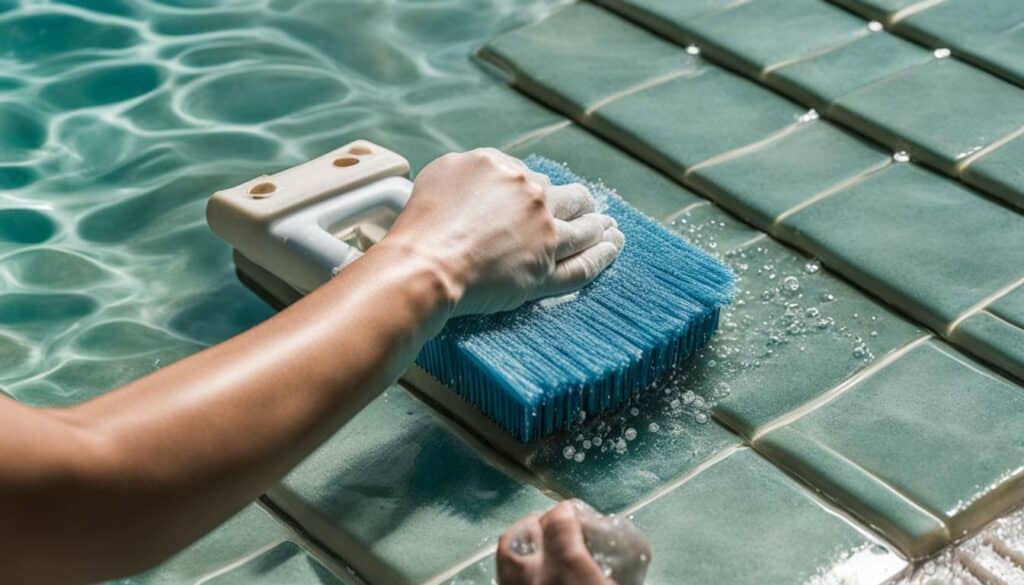
Before you start removing calcium from your pool tile, it’s important to gather the necessary supplies. By having all the items you need on hand, you can ensure a smooth and efficient cleaning process. Here’s a list of what you’ll need:
- Gloves: to protect your hands
- Goggles: to protect your eyes from any cleaning agents
- Scrub brush: to scrub the tile surface
- Vinegar: for a natural cleaning solution
- Commercial tile cleaner: for a stronger cleaning solution (optional)
- Bucket: to mix cleaning solution and water
- Sponge: to apply cleaning solution to tile surface
- Towel: to dry the tile surface
| Supplies | Image |
|---|---|
| Gloves |  |
| Goggles |  |
| Scrub brush |  |
| Vinegar |  |
With these supplies, you’re ready to tackle the task of removing calcium from your pool tile. Keep in mind that you may not need every item on this list, depending on the severity of the calcium buildup and the cleaning method you choose.
Preparing the Pool Area
Properly preparing your pool area before starting the calcium removal process is important to ensure the safety of your pool and surrounding environment. The chemicals used to remove calcium from pool tile can be harmful to plants and animals, so taking precautions is necessary.
Firstly, turn off your pool’s pump and filter system to prevent any chemicals from circulating through them. Next, remove any floating debris or larger calcium deposits from the pool’s water using a skimmer. This will prevent any debris from falling onto the pool tile during the cleaning process.
Cover any outdoor electrical outlets or lights in the immediate area to protect them from the cleaning agents. Additionally, you may want to consider wearing gloves and eye protection to avoid any skin or eye irritations.
Finally, ensure that the area around the pool is clear of any plant life that could come into contact with the cleaning agents. If there are any plants close to the pool, cover them with plastic sheeting or a tarp to protect them from any potential damage.
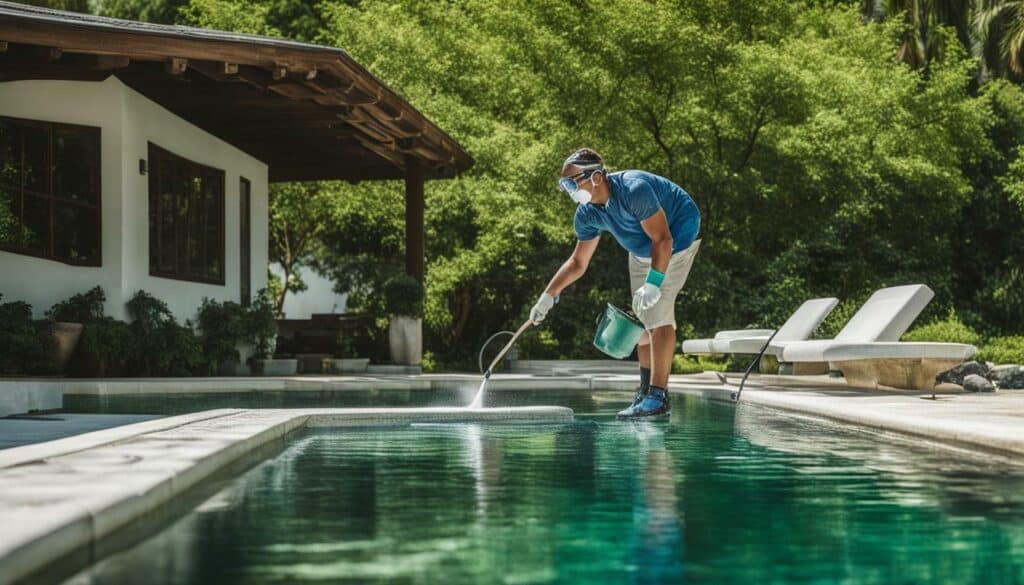
Now that you’ve taken the necessary precautions, you can move on to the next step.
Using Vinegar for Calcium Removal
If you prefer to use a natural cleaning agent to remove calcium from your pool tile, vinegar is an excellent option. Not only is it an affordable and safe cleaning solution, but it’s also readily available in most households.
To use vinegar for pool tile calcium removal, you’ll need:
| Supplies | Usage |
|---|---|
| White vinegar (5% acidity) | To dissolve calcium buildup |
| Warm water | To dilute vinegar and aid in cleaning |
| Spray bottle | To apply vinegar solution to pool tile |
| Soft-bristled brush or sponge | To scrub pool tile gently |
Here’s how to use vinegar to remove calcium buildup from your pool tile:
- Fill a spray bottle with equal parts of warm water and white vinegar. Shake well to mix the solution.
- Apply the vinegar solution to the affected areas of the pool tile. Make sure the tile is saturated with the solution.
- Let the vinegar solution sit on the tile for about 10 minutes, allowing it to dissolve the calcium buildup.
- Gently scrub the tile with a soft-bristled brush or sponge to remove the loosened deposits. Be careful not to scratch or damage the tile.
- Rinse the tile with clean water to remove any remaining vinegar solution and loosened calcium deposits.
Tip: For tough or stubborn calcium deposits, you can soak a cloth in vinegar and place it on the affected tile area for 30 minutes to an hour before scrubbing.
Using vinegar to remove calcium from pool tile is a safe and effective method. However, it may require several rounds of cleaning to remove all the buildup. If vinegar alone doesn’t work, you can try using commercial tile cleaners. We’ll cover those in the next section.
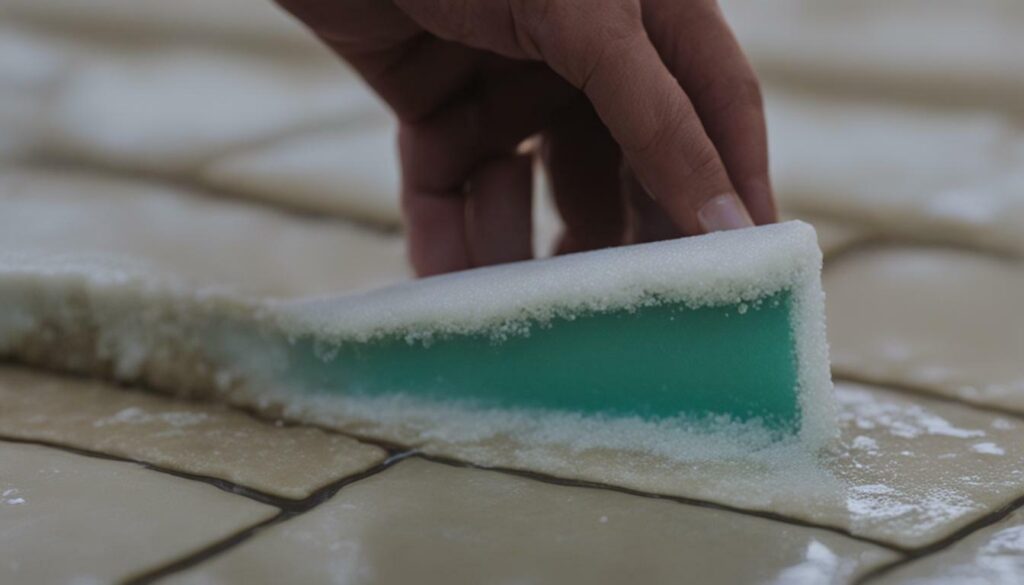
If vinegar doesn’t get the job done, there are several commercial tile cleaners available for removing calcium from pool tile. These cleaners are specially designed to break down and dissolve calcium deposits, making them easier to scrub away. When selecting a commercial tile cleaner, be sure to read the label carefully and choose one that is safe for use on pool tile.
It’s important to note that some commercial cleaners contain harsh chemicals that may damage the tile or harm the environment. Be sure to wear protective gloves and eyewear when handling these cleaners, and follow the instructions carefully.
To apply the cleaner, start by diluting the solution according to the instructions on the label. Then, using a scrub brush or sponge, apply the cleaner to the affected area in small sections. Allow the cleaner to sit for a few minutes to penetrate the buildup before scrubbing in a circular motion.
Work from the top of the tile down to prevent the cleaning solution from dripping onto already cleaned areas. Rinse the tile with water after scrubbing to remove any remaining cleaner, and repeat the process as necessary until all calcium deposits are removed.
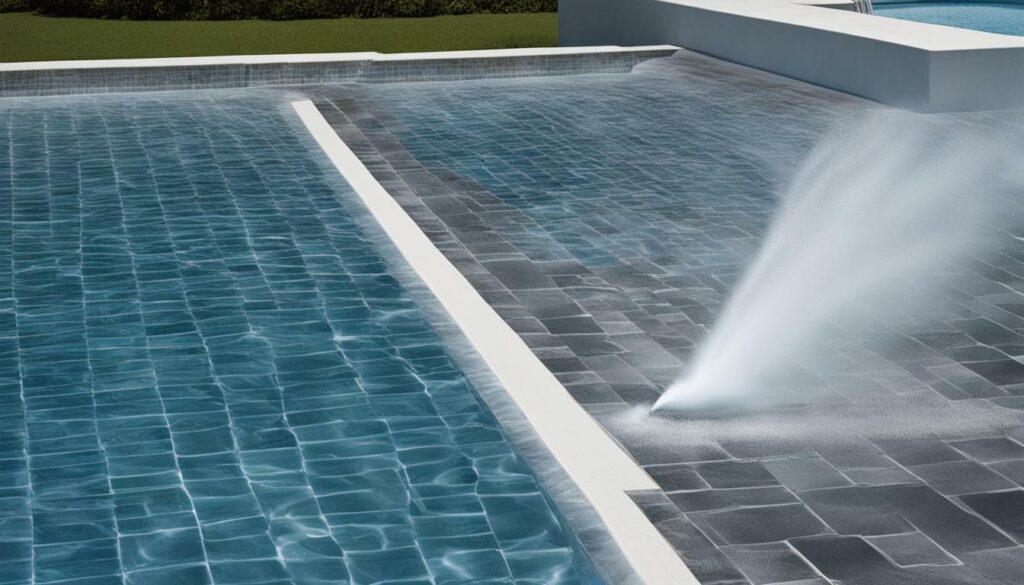
Once you have applied your cleaning solution to the pool tile, it’s time to start scrubbing. Using a soft-bristled brush, work in small circular motions starting at the top of the tile and working your way down.
It’s important to avoid using harsh abrasive brushes or steel wool, as these can scratch and damage the tile’s surface. If the calcium buildup is particularly stubborn, you may need to use a bit of extra elbow grease or a more abrasive brush, but proceed with caution.
For hard to reach areas, use a toothbrush or a cotton ball soaked in your cleaning solution to gently scrub away the buildup.
As you scrub, rinse the brush or cotton ball frequently to avoid redistributing the calcium deposits.
Continue scrubbing and brushing until all of the calcium buildup has been removed from the tile.
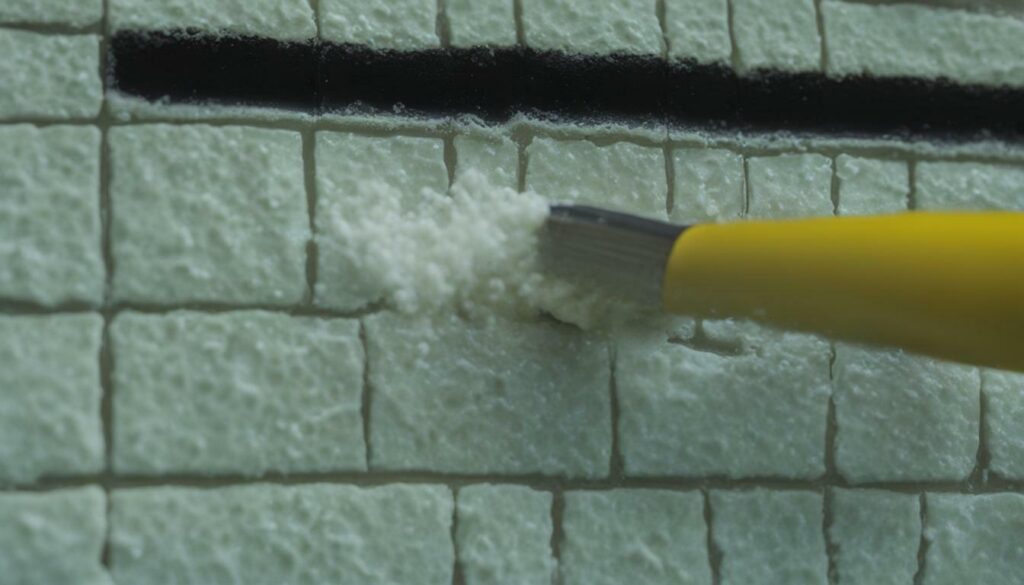
Remember to take breaks and hydrate as needed, and avoid overexerting yourself to prevent accidents.
Scrubbing and Brushing Techniques
After applying vinegar or commercial tile cleaners, it’s time to scrub and brush the affected pool tile to remove calcium buildup. A soft-bristled brush and gentle pressure work best to avoid damaging the tile surface.
Start by working in small sections to ensure the entire area is cleaned thoroughly. Use a back-and-forth or circular motion to scrub away the buildup. Pay special attention to corners, edges, and grout lines where calcium buildup tends to accumulate.
If the calcium buildup is particularly stubborn, try applying more cleaning solution and letting it sit for a few minutes before scrubbing again. Avoid using abrasive scrubbers or steel wool, as they can scratch and damage the tile surface.
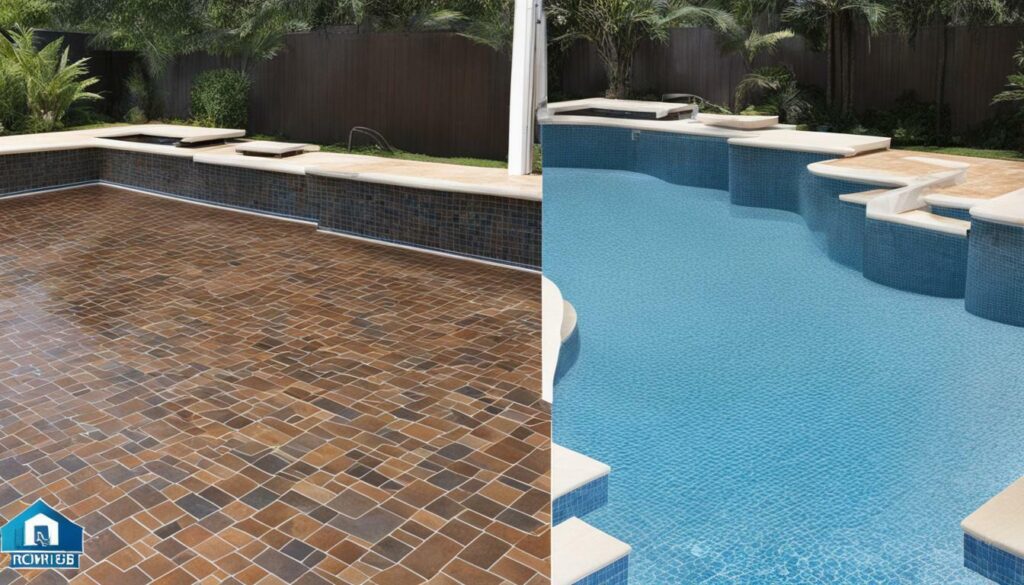
Once you’ve scrubbed the entire area, rinse the tile thoroughly with water to remove any remaining cleaning solution. Repeat the process if necessary until all calcium buildup is removed.
Preventing Future Calcium Buildup
Now that you’ve successfully removed the calcium deposits from your pool tile, it’s essential to take preventive measures to avoid future buildup. By following these simple tips and tricks, you can keep your pool tile looking brand new all year round.
- Regular cleaning: A simple and effective way to prevent calcium buildup is by regularly cleaning your pool tile. Use a pool brush to scrub the tile at least once a week and remove any debris or dirt that may promote calcium buildup.
- Proper chemical balance: Maintaining the proper chemical balance in your pool is crucial in preventing calcium buildup. Test the pool water regularly and add chemicals as needed to keep the water properly balanced.
- Use a sequestering agent: A sequestering agent can help prevent calcium buildup by binding to the calcium particles in the water and preventing them from adhering to the pool tile. Add a sequestering agent to your pool water regularly to keep calcium buildup at bay.
By following these preventive measures, you can keep your pool tile clean and calcium-free. Remember to regularly check your pool for any signs of calcium buildup and take action as soon as possible to prevent further damage.
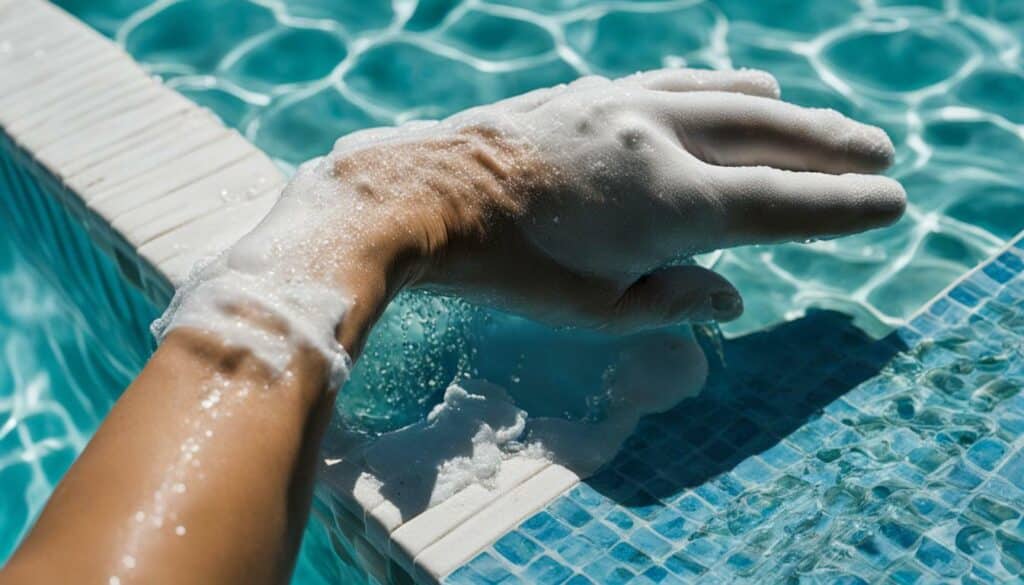
Removing calcium deposits from your pool tile can be a daunting task, but with the right tools and techniques, it can be done effectively. By following our step-by-step guide, you can restore your pool tile to its former shine and prevent future buildup.
Remember to Maintain Your Pool Tile
Avoiding calcium buildup in the future requires consistent maintenance. By regularly cleaning your pool tile and using preventive measures, such as adjusting your pool’s pH level, you can keep your pool tile free from calcium deposits.
Enjoy Your Clean Pool All Summer Long
Now that you know how to remove calcium from your pool tile, you can enjoy a clean and inviting pool all summer long. Remember to follow our tips and tricks for maintaining your pool tile and preventing future buildup. With a little effort and attention to detail, you can keep your pool looking beautiful and inviting for years to come.
FAQ
Q: How do I remove calcium from pool tile?
A: To remove calcium from pool tile, you can use vinegar or commercial tile cleaners. Scrubbing and brushing techniques are also important for effective removal. Rinse the area thoroughly and repeat the process if necessary. Regular maintenance can help prevent future calcium buildup.
Q: Why does calcium buildup form on pool tile?
A: Calcium buildup on pool tile occurs due to high levels of calcium in the water, which can deposit minerals onto the tile surface. This buildup can make the tile appear dull and affect the functionality of your pool.
Q: What supplies do I need to remove calcium from pool tile?
A: To effectively remove calcium from pool tile, gather supplies such as vinegar, commercial tile cleaners, scrub brushes, and clean, soft cloths or sponges. Protective gear like gloves and goggles may also be necessary.
Q: How do I prepare the pool area for calcium removal?
A: Before removing calcium from pool tile, make sure to properly prepare the pool area. This includes turning off pool equipment, draining some water to expose the affected tiles, and covering any sensitive areas to prevent damage.
Q: Can I use vinegar to remove calcium from pool tile?
A: Yes, vinegar is a safe and effective method for removing calcium deposits from pool tile. Dilute vinegar with water, apply it to the tile surface, let it sit for a few minutes, and then scrub with a brush or sponge. Rinse the area thoroughly.
Q: How do I apply commercial tile cleaners for calcium removal?
A: There are various commercial tile cleaners available for calcium removal. Follow the instructions on the product label and apply the cleaner to the affected areas. Use a brush or sponge to scrub the tile surface, and rinse thoroughly after cleaning.
Q: What techniques should I use for scrubbing and brushing the pool tile?
A: When scrubbing and brushing pool tile, use gentle but firm pressure to remove the calcium deposits. You can use a nylon brush or a scrub pad. Avoid using abrasive materials that may damage the tile surface.
Q: Why is it important to rinse the tile thoroughly after cleaning?
A: Rinsing the tile thoroughly after cleaning is crucial to remove any residue from the cleaning agents. This will help ensure that the pool water remains balanced and prevent any potential skin irritation or damage to the pool equipment.
Q: How can I prevent future calcium buildup on my pool tile?
A: To prevent future calcium buildup, regularly clean and maintain your pool tile. Use a tile sealer to create a protective barrier and consider balancing the pool water chemistry to prevent excessive calcium levels. Regular brushing and scrubbing can also help prevent deposits.
Q: How can I maintain the cleanliness of my pool tile?
A: To maintain the cleanliness of your pool tile, regularly brush and scrub the surface to remove any debris or buildup. Monitor the water chemistry and balance the calcium levels. Promptly address any issues or stains that may develop.


